Goa is frequently portrayed as a place with beaches, vibrant nightlife, and horizons bordered with palm trees. Beneath its tropical allure, however, is a dramatic tale of centuries of clashes and blendings between empires, faiths, and cultures. Portuguese colonists, Muslim kings, and Hindu dynasties have all left their imprint on the area's wood, stone, and colour.
Dynasties, traders, and colonists are all intertwined in Goa's history. After being governed by the Mauryas and then the Satavahanas, Goa flourished as a port under Hindu kingdoms such as the Kadambas, who established local government and temples. Islamic influences were introduced during the fourteenth century, when the Bahmani Sultanate was in power. The most significant turning point in Goa's history occurred in 1510, when the Portuguese gained control of the region under Afonso de Albuquerque. They made Goa a vital base for their empire, constructing grand churches, formidable forts, and majestic cathedrals. These buildings mixed European designs with local craftsmanship, giving Goa its unique look. Over time, Hindus, Muslims, and Christians all lived together here, adding their own traditions and creating a rich cultural mix that is still evident in Goa today. Goa has a rich and enduring ecclesiastical, architectural, and artistic legacy stemming from over 450 years of Portuguese domination. It was freed and united with India in 1961.
Today, Goa's historic landmarks stand alongside its bustling beaches, giving the state a unique blend of history and modern life. When you explore these places, you will walk through stories of the past that have shaped Goa into what it is today.
This blog takes you through 10 famous monuments in Goa that promise connection, wonder, and a deeper appreciation for Goa's identity.
Basilica of Bom Jesus, Goa
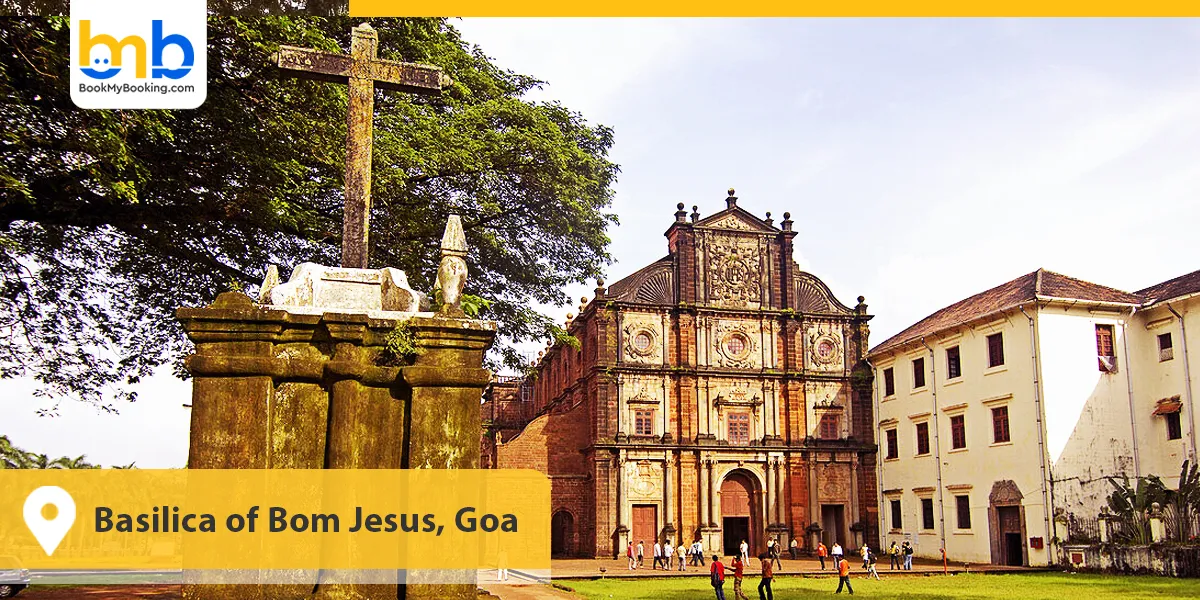
The ageless ambience of the Basilica of Bom Jesus is what greets you as soon as you enter. This 16th-century masterpiece, which houses St. Francis Xavier's mortal remains, is one of Goa historical sites. You are reminded of Goa's strong ties to art and religion by its gilded interiors, carved wooden altars, and baroque façade. This basilica is special because it isn't just a religious site; it's one of the most celebrated UNESCO World Heritage sites in Goa, drawing people who want to experience history up close.
Take your time to admire the intricate carvings and the contrast between its simple exterior and richly decorated interiors. If you're drawn to exploring Goa's cultural attractions, this basilica is a top choice that captures the spirit of Portuguese artistry blended with Indian heritage. You'll leave with reverence and awe, knowing you've experienced one of the most important historical monuments in Goa tourism.
- Did you know?
The embalmed body of St. Francis Xavier, which has been kept here for centuries, has shown minimal decay, a phenomenon still studied by scientists today.
Se Cathedral Goa

Se Cathedral isn't just a church; it's the largest in Asia, making it one of the must-see landmarks in Goa. Built to celebrate the Portuguese victory over Muslim rulers, the cathedral stands tall with grand arches, a golden altar, and intricately carved woodwork. Its scale alone makes it one of the most awe-inspiring historical places to visit in Goa. You can almost imagine the centuries of prayers, rituals, and celebrations that have filled this sacred space.
The cathedral is also known for its famed "Golden Bell," considered one of the best-toned bells in the world. If you're drawn to Goa's cultural attractions, this church reflects religious devotion and architectural brilliance. Alongside the other churches and forts in Goa, it defines the state's historic charm and enduring cultural identity.
- Did you know?
Despite being over 400 years old, the Golden Bell inside Se Cathedral has never lost its resonance and can be heard from several kilometres away.
Fort Aguada Goa
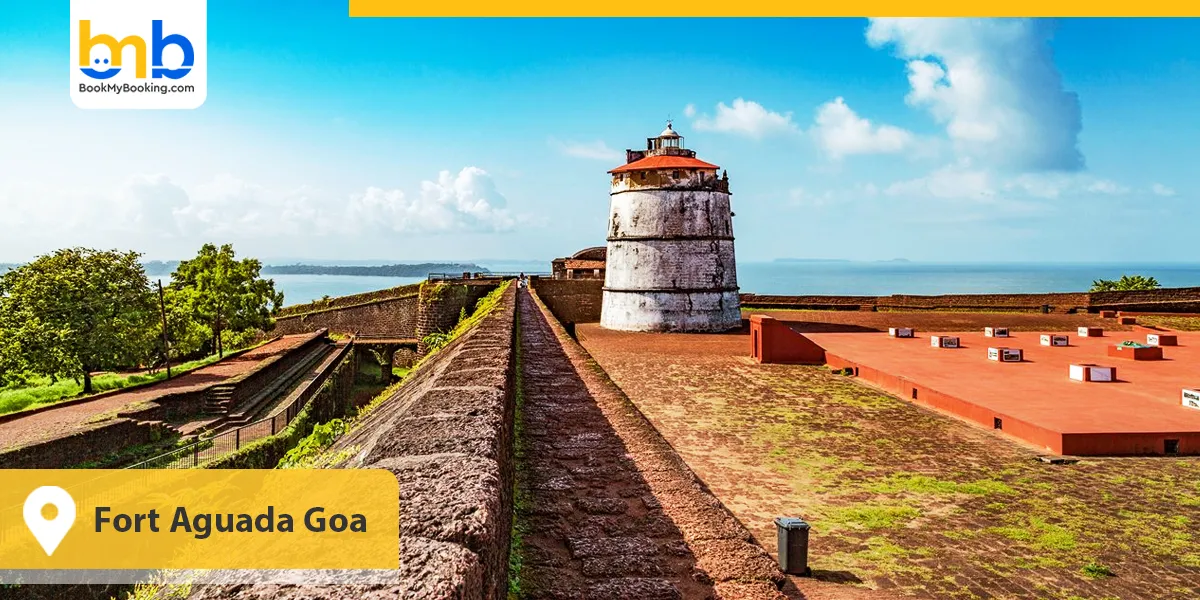
Standing firm against the Arabian Sea, Fort Aguada is one of the most remarkable historic landmarks in Goa. Built in 1612 by the Portuguese, it was a defence against Dutch and Maratha invasions. The fort also served as a freshwater source for passing ships, which is how it got its name—Aguada means "water" in Portuguese. Today, you can walk along its sturdy laterite walls, gaze at the lighthouse, and take in sweeping sea views that make it one of the most memorable must-see landmarks in Goa.
Sunsets at this fort feel magical, reminding you why this remains among the most visited historical places in Goa. If you're interested in exploring Forts in North Goa, this is the finest example of how history and natural beauty come together. Indeed, Fort Aguada is one of those cultural attractions in Goa that you cannot skip.
- Did you know?
The lighthouse at Fort Aguada, built in 1864, was Asia's oldest operational lighthouse until 1976.
Chapora Fort Goa
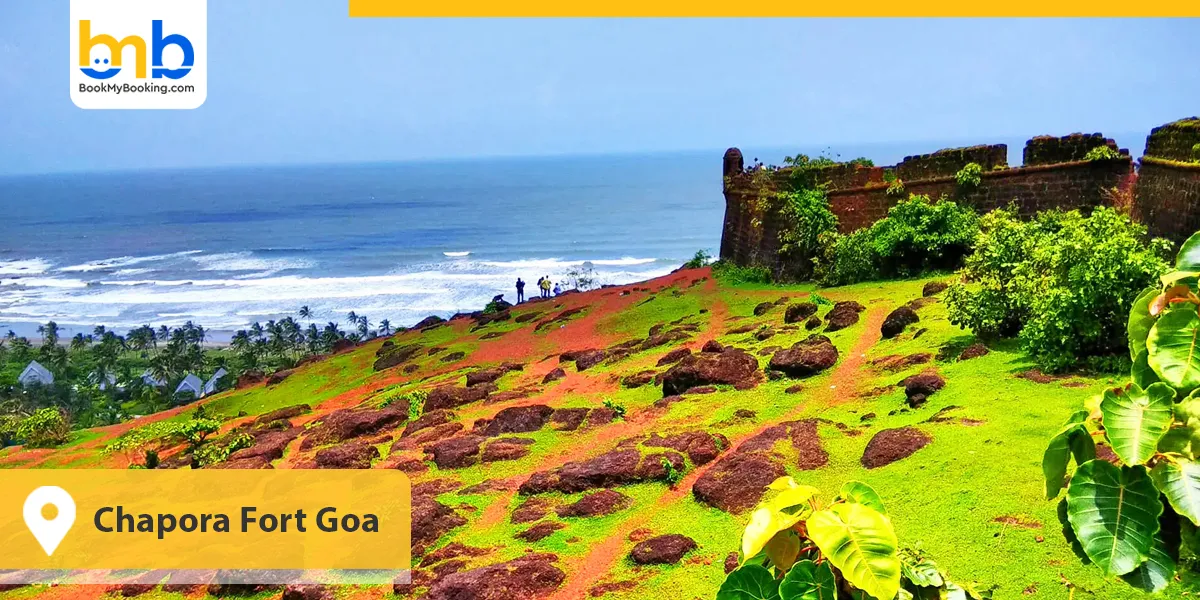
Perched high above the Chapora River, Chapora Fort symbolises cinematic fame and history. Popularly known as the Dil Chahta Hai fort, it is among the most photogenic of the Goa UNESCO World Heritage sites. While Muslim rulers originally built it, the Portuguese later rebuilt it in 1717 to secure their northern territories. Its strategic location made it vital for defence and trade, so it's still one of the top historical monuments in Goa tourism.
You'll be rewarded with breathtaking panoramic coastline views when you climb to the top. Watching the sunset here is an experience that makes you feel like part of history. Alongside other churches and forts in Goa, this one is special in modern pop culture. If you're seeking things to do in Goa beyond beaches, exploring Chapora is the perfect choice.
- Did you know?
The fort's design allowed defenders to spot enemy ships long before they reached the Goan coast, making it nearly impossible to stage a surprise attack.
Reis Magos Fort, Goa
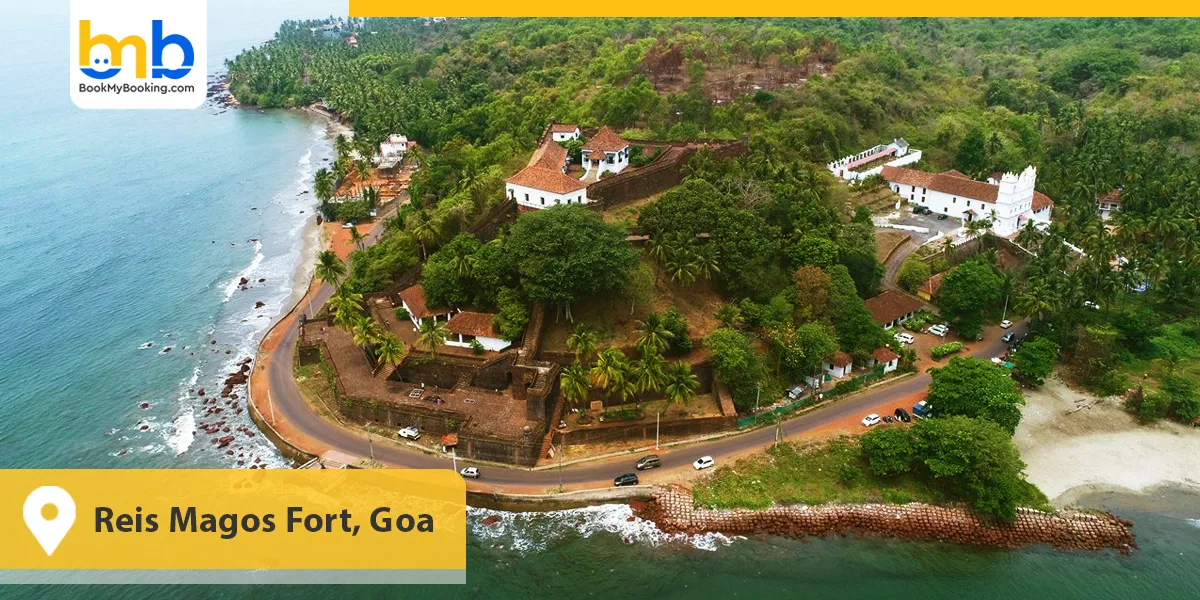
Reis Magos Fort may not be as large as Fort Aguada, but it's one of the landmarks in Goa worth visiting for its unique blend of history and beauty. Built in 1551, this fort was restored with care and now serves as a cultural and heritage hub. From its ramparts, you'll enjoy stunning views of the Mandovi River, and inside, exhibitions showcase Goa's military past and Portuguese heritage in Goa. This makes it an essential stop among the best heritage sites in Goa.
Unlike other forts, Reis Magos offers a more intimate experience, you can explore at your own pace and absorb the atmosphere. It is also tied deeply to Goa's colonial history, a silent witness to battles and trade. If you're curious about Goa heritage walk tours, this fort often features as a highlight because of its authentic restoration and storytelling displays.
- Did you know?
Before being restored as a cultural centre, Reis Magos Fort served as a prison for decades, housing common criminals and political detainees.
St. Cajetan Church, Goa
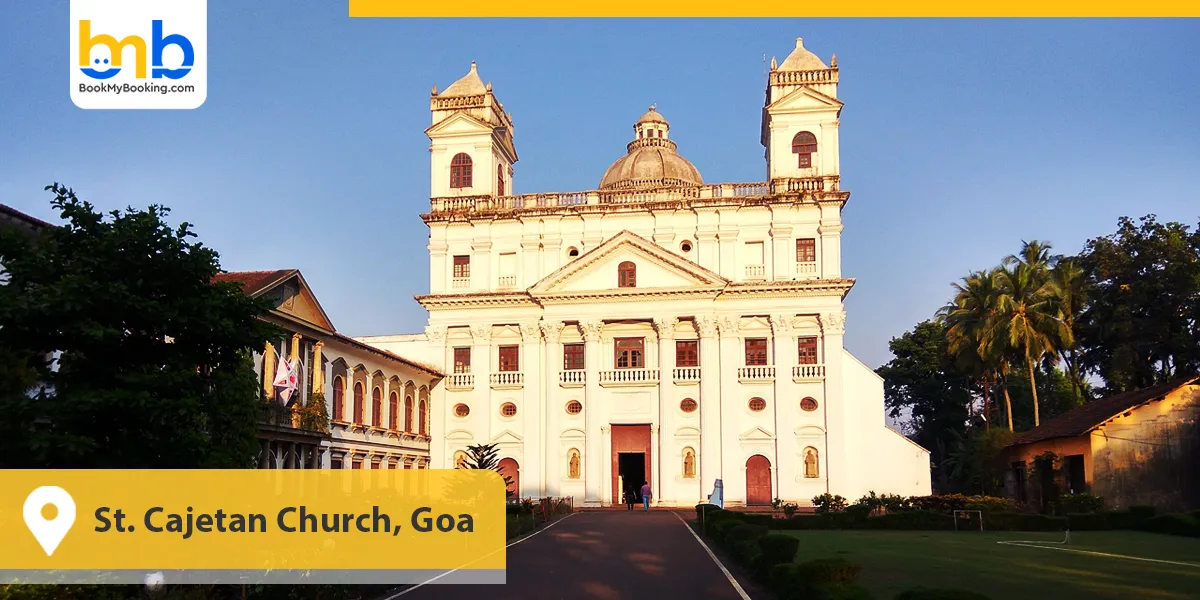
Modelled after Rome's St. Peter's Basilica, St. Cajetan Church is a striking example of Baroque architecture that stands out among Goa's historic landmarks. Built by Italian friars in 1661, this church is known for its Corinthian columns, majestic dome, and intricately carved altars. As you step inside, you'll notice how its design mirrors European grandeur while being rooted in Goan heritage, making it one of the most fascinating cultural attractions in Goa.
The church is a space of peace and spirituality. Surrounded by lush greenery, it feels almost hidden away, which makes your experience more personal. This gem is often overlooked by anyone exploring churches and forts in Goa, but it deserves a spot on your list. And if you're curious about colonial architecture in Goa, St. Cajetan is a fine example of how European styles were adapted to local settings.
- Did you know?
The foundation of St. Cajetan Church was laid directly over the ruins of an ancient Hindu temple, symbolising the blending and sometimes clashing of Goa's layered cultural past.
Mangueshi Temple Goa
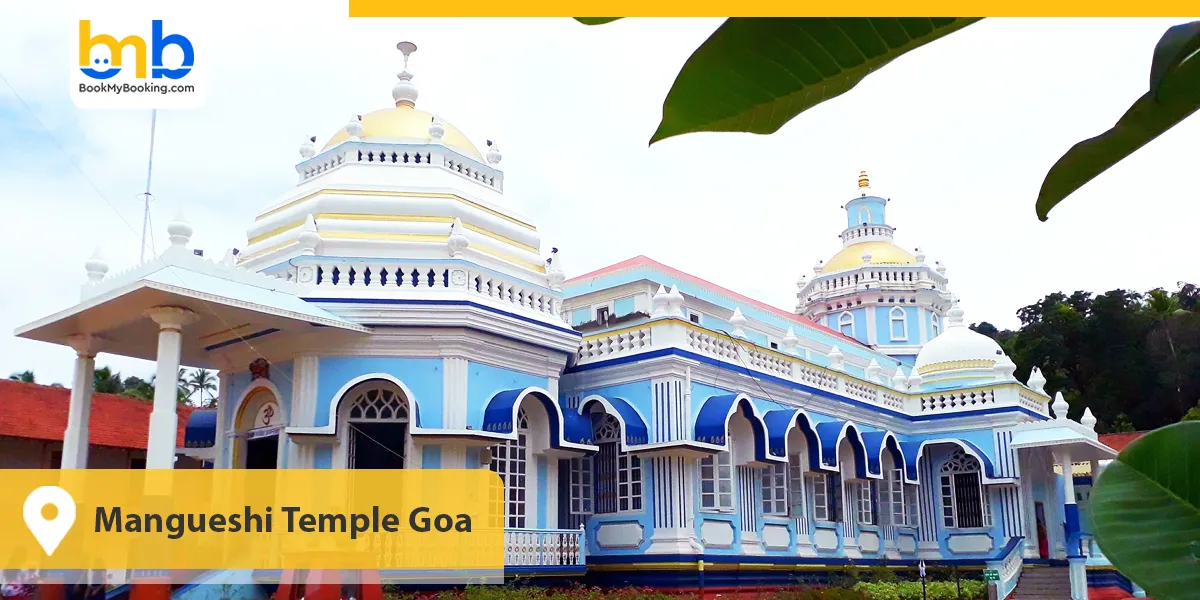
If you want to experience the spiritual side of Goa historical places to visit, the Mangueshi Temple is a must. One of the most popular cultural destinations in Goa, this 400-year-old temple is devoted to Lord Shiva. It stands out among Goan attractions because of its unique white façade, deepstambha (light tower), and intricate interiors. You'll experience a serene connection to Goa's Hindu culture as you stroll through its courtyards, which flourished alongside the influence of the Portuguese.
The temple serves as a gathering point for festivals and rituals, showcasing Goa's diverse heritage. If you're exploring religious sites in Goa, this is one of the most meaningful stops to experience devotion and artistry together. Unlike the colonial churches, Mangueshi Temple provides balance, offering a glimpse into the state's pre-Portuguese past.
- Did you know?
The deity Manguesh was initially housed in Kushasthali (Cortalim), but devotees secretly moved the idol to its current location to protect it when the Portuguese arrived.
Mahalsa Temple Goa
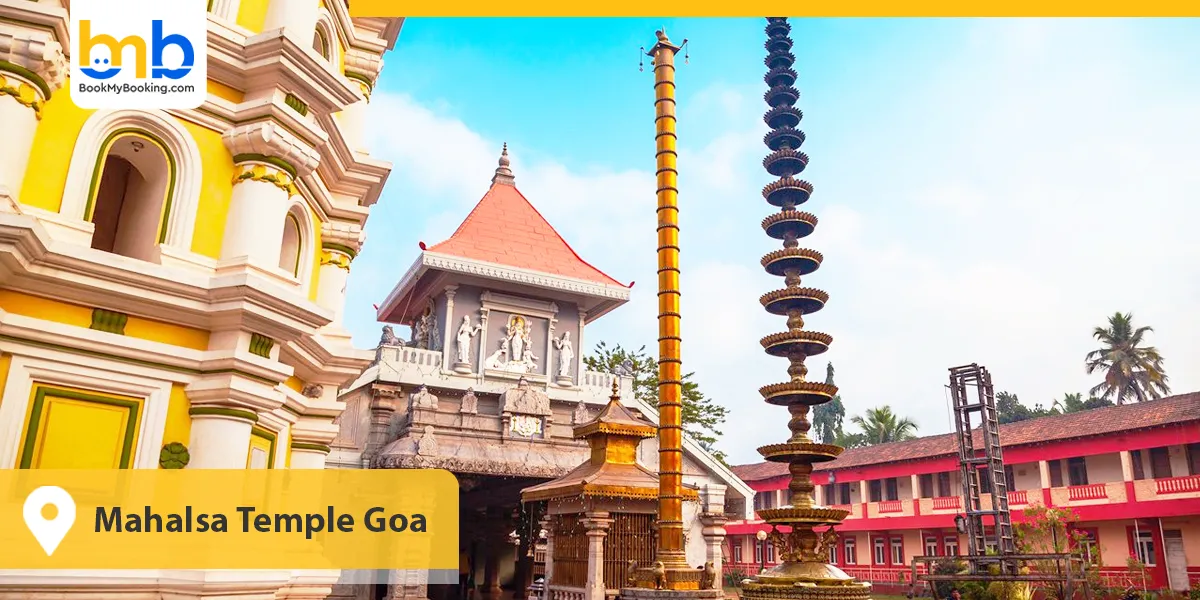
Dedicated to Goddess Mahalsa Narayani, this temple is one of the finest heritage sites in Goa, beautifully reflecting local traditions. The temple is a gem among Goa's historic sites because of its exquisite brass lamp tower, tall arches, and beautiful sculptures. The Mahalsa Temple feels more personal than many larger structures, beckoning you to pause and admire the craftsmanship. Centuries of prayer and celebration are brought to life by its festivals, particularly the magnificent yearly jatra.
The temple serves as a reminder that Goa's cultural diversity extends beyond its churches. It gives a clear view of the state's rich and complex heritage. The site also has stunning architecture. You can feel a peaceful and spiritual atmosphere when you visit. If you are looking for temples in Goa, this is a must-see. Visiting Mahalsa Temple allows you to connect with Goa's Hindu traditions while still being surrounded by the vibrant mix that defines Goa's historical places to visit.
- Did you know?
The temple houses one of the largest brass lamps in India, which is said to be so tall that lighting its top tier requires the use of a ladder.
Fontainhas Goa
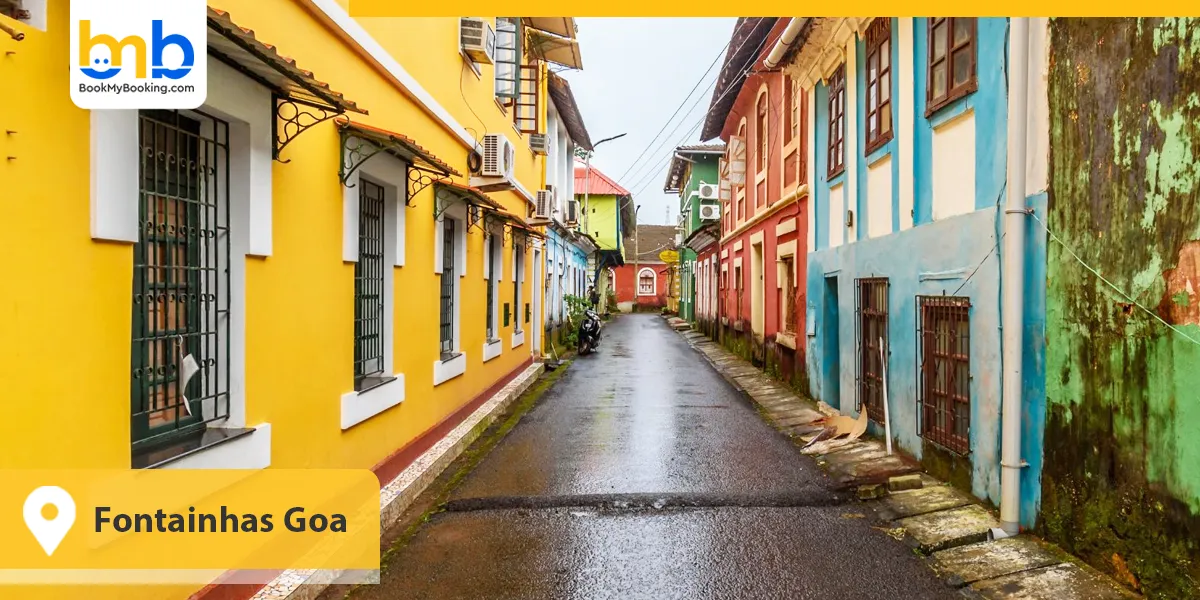
Walking through Fontainhas feels like stepping into another world. The Latin Quarter in Panjim is one of the most atmospheric historical places to visit in Goa. Narrow lanes with brightly painted houses, overhanging balconies, and red-tiled roofs showcase Goa's deep-rooted Portuguese heritage. What makes Fontainhas special is that it isn't just a neighbourhood, but one of the most vibrant cultural attractions in Goa, alive with art galleries, bakeries, and boutique stays.
You can join Goa heritage walk tours to appreciate its charm, with guides sharing stories of families who've lived here for generations. Exploring these lanes gives you a sense of connection to the everyday life of old Goa, making Fontainhas one of the landmarks in Goa worth visiting. It's like an open-air museum where architecture and culture blend seamlessly.
- Did you know?
The houses in Fontainhas are legally protected by the government, which means their exteriors must be maintained in traditional colours, preserving the quarter's timeless beauty.
Christian Art Museum, Goa

If you're interested in historical museums in Goa, the Christian Art Museum is a hidden treasure. You may view centuries-old religious art at this Goa UNESCO World Heritage site in Old Goa. Among the most well-known landmarks in Goa, the collection is a must-see, as it showcases the depth of Catholic devotion and craftsmanship through a range of items, from sculptures and paintings to exquisite ivory work.
This museum is unlike any other, you'll find masterpieces that once adorned churches, carefully preserved to showcase the craftsmanship of Goan and Portuguese artists. Exploring it gives insight into how faith, culture, and art were woven together. It's also one of the historic landmarks in Goa, where you can slow down and absorb centuries of history at your own pace.
- Did you know?
The museum houses one of India's only surviving ivory statues of Baby Jesus, carved in the 17th century and considered a priceless work of devotional art.
Conclusion
By the end of your journey across these best heritage sites in Goa, you'll realise that this state is more than sun and sand, a mosaic of faith, resilience, and creativity. Each stop, whether a grand church, a hilltop fort, or a tucked-away museum, reveals a piece of the puzzle that makes Goa unforgettable. They are experiences that stay with you long after you leave. So the next time you plan your trip, don't just think of beaches, rather embrace the forts, temples, and neighbourhoods that tell Goa's true story. Exploring these landmarks in Goa that are worth visiting will make your journey richer and far more personal.


